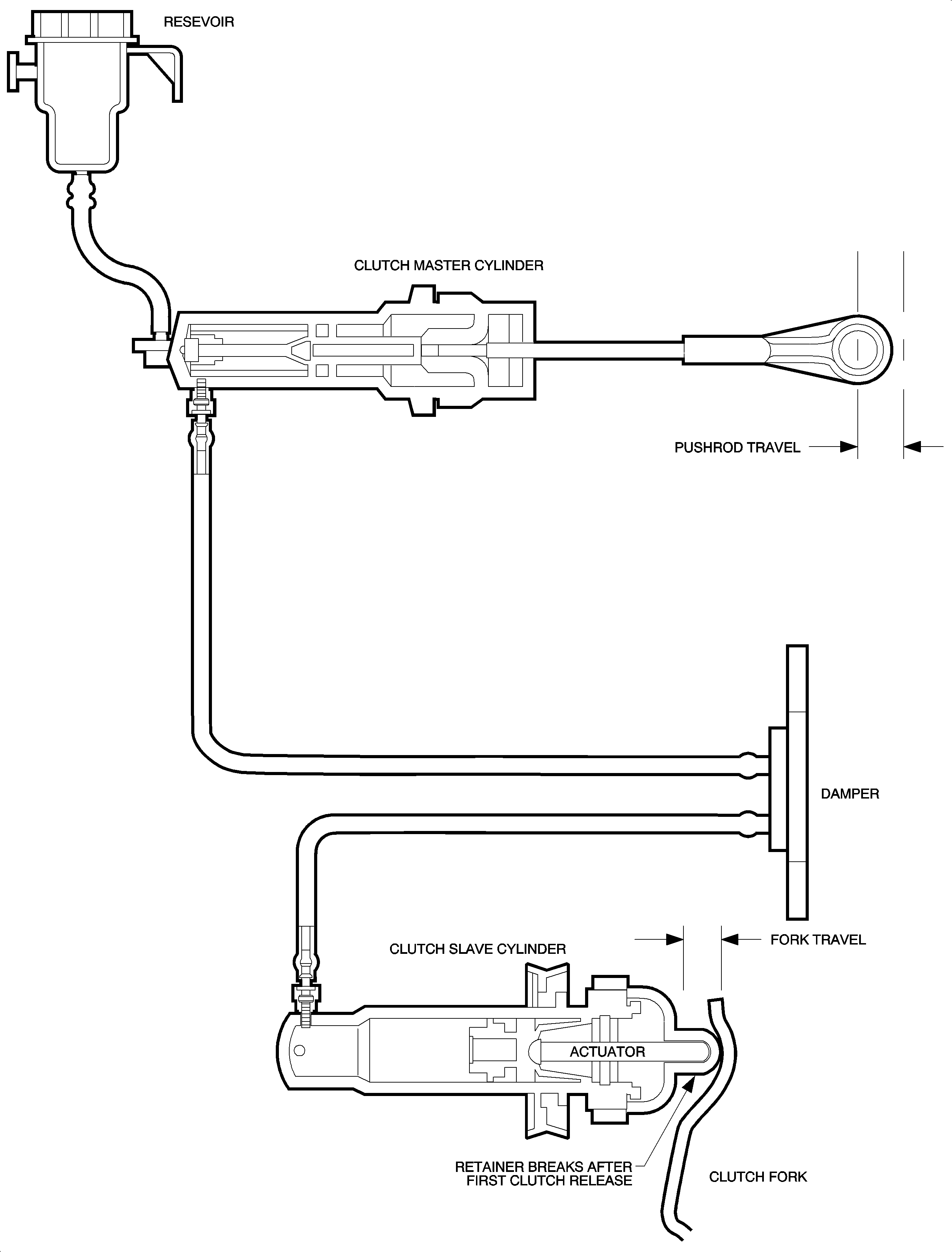Definitions Of Terms
The following definition are being provided to establish a common language and assist the user in describing transaxle related conditions. Some of these terms or conditions are used in the this service manual.
Shift Control Related
Binding - a shift condition where a driver feels resistance/light friction when shifting into gear.
Cable drag - a kink or bend in the cable that results in rough or binding shift feel.
Cold gear clash - a grinding/growling sound that is made when attempting to shift into gear during cold conditions.
Double bump - a shift condition where a driver experiences two separate peak loads when shifting into gear.
Gear clash/grinding - a grinding/growling sound that is made when attempting to shift into gear. Usually caused by a worn blocker ring or blocker ring spring.
Gear rattle - a rattle that usually occurs at engine lugging conditions or low idle speeds with the transaxle in neutral and the clutch engaged.
Hard shift (dynamic / engine running) - difficulty in shifting when vehicle is in motion.
Hard shift (static / engine off) - difficulty in shifting when vehicle is not moving.
Hop-out - condition where transaxle will consistently disengage from gear without operator assistance.
Intermittent hop-out - condition where transaxle will periodically disengage from gear without operator assistance.
Spline lock - a "scallop" feature machined alternately in the internal spline of the synchronizer sleeve designed to engage with the gear (clutch teeth) to prevent hop-out.
Clutch/Clutch Hydraulics Related
Clutch shudder - a repeated jerking sensation caused by the slipping and grabbing of the clutch disc when releasing clutch/launching the vehicle.
High pedal effort - when an unusual amount of force is required to depress the clutch pedal.
Pedal vibration - a vibration that is transmitted through the clutch pedal.
Spongy clutch - spongy feel when depressing clutch and usually an indication of air in the hydraulic system.
Squeaky clutch - when a squeak is generated while depressing or releasing the clutch pedal.
Inoperative clutch - non-functional clutch.
High engage point - long clutch pedal travel during pedal release before the clutch disc engages.
Noise Conditions
Final drive noise - a howl/whine related to vehicle speed and is noticeable in all gears.
Gear noise - a whine that is due to gear contact that is related to a certain gear and vehicle speed. The noise disappears after an upshift. The noise is usually "gear profile" related.
Gear clicking noise - ticking noise observed on every rotation of a gear pair that is usually caused by a "nick" or "ding" on a gear tooth.
Basic Components
The basic parts of the clutch system are the driving members, the driven members and the operating members. The clutch housing is part of the manual transaxle assembly.
Driving Members
The driving members consist of two flat surfaces machined to a smooth finish. The rear surface of the flywheel is one and the front surface of the pressure plate is the other. The pressure plate is mounted in a steel cover which is bolted to the flywheel.
Driven Members
The clutch disc is the driven member which is splined to the input shaft. The clutch disc is free to travel lengthwise along the input shaft splines while driving the input shaft through the splines.
The driving members and the driven members are held in contact by spring pressure. This pressure is generated by a diaphragm spring in the clutch housing cover assembly.
Operating Members
The clutch release system is operated by hydraulic pressure and consists of the clutch pedal, clutch master cylinder/fluid reservoir, clutch slave cylinder, clutch fork and clutch release bearing.
Hydraulic Release System
A hydraulic clutch operating mechanism is used on all manual transaxle models. The mechanism consists of a master cylinder/fluid reservoir and a slave cylinder connected to the master cylinder by hydraulic tubing. The master cylinder/fluid reservoir is mounted in the front of dash and the slave cylinder is mounted in the transaxle clutch housing. The master cylinder is operated directly off the clutch pedal by a pushrod.
As the clutch pedal is depressed, hydraulic fluid under pressure from the master cylinder flows into the slave cylinder. As hydraulic force is applied to the slave cylinder, the push rod movement moves the clutch fork toward the flywheel forcing the release bearing into the pressure plate releasing the clutch. The hydraulic system is self adjusting. No adjustment is necessary or possible.
Preliminary Checks
Before attempting to repair the clutch, transaxle or related components for any reason other than an obvious failure, the complaint should be identified, using the Condition-Cause-Correction chart.
Hydraulic Clutch Fluid Level Check
Notice: Do not use mineral oil or a paraffin base oil in the hydraulic system. These fluids will damage the rubber parts in the cylinders. Only DOT 3 brake fluid should be used.
Notice: Carefully clean the cap and sides of the reservoir before removing the cap to prevent contamination of the system with dirt, water, or other foreign material.
The clutch hydraulic system is a sealed unit and does not need required periodic checking.
Important: The clutch hydraulic system is serviced as a complete unit. It has been filled with fluid and bled of air. Individual components of the system are not available separately, except for the slave cylinder actuator pushrod plastic retainer strap and reservoir cap.
If the system requires any fluid, check the hydraulic system components for leakage. Remove the slave cylinder from the clutch housing and check for leakage past the piston. A slight wetting of the surface is normal. Check the system at all possible leak points. Replace the system if excessive leakage is evident.
Clutch Hydraulic System

